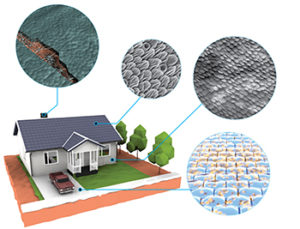DARPA Creates Green Building Materials Alongside ELM

ARLINGTON COUNTY, Va. — Imagine working with green building materials that could repair themselves after damage or destruction occurs. The Arlington County, Va.-based U.S. Department of Defense Advanced Research Projects Agency (DARPA) is doing just that by releasing their long-term design plans for the Engineered Living Materials (ELM) program on Aug. 26.
During the month of September, DARPA will develop and submit a proposal that breaks down the cost of the program and designates ELM as its own intellectual property. From there, ELM will construct hybrid materials that can be rapidly grown outside of a factory environment, according to a statement from DARPA.
According to a statement from ELM, structural materials currently in use for construction projects wear out due to age and damage. They are expensive to produce and ship and offer limited response to changes in their environment.
“Living materials represent a new opportunity to leverage engineered biology to solve existing problems associated with the construction and maintenance of built environments, and to create new capabilities to craft smart infrastructure that dynamically responds to its surroundings,” according to a statement from DARPA.
By designing these materials engineers will have the capacity to create a driveway that eats oil spills; a chimney that cleans itself or heals after heat damage; surface materials that never fade or flake; or even a roof that breathes and controls airflow, according to Green Building Elements.
“The vision of the ELM program is to grow materials on demand where they are needed, said ELM Program Manager Justin Gallivan in a statement. “Imagine that instead of shipping finished materials, we can ship precursors and rapidly grow them on site using local resources. And, since the materials will be alive, they will be able to respond to changes in their environment and heal themselves in response to damage.”
DARPA’s concept for developing green building materials was inspired by the recent development of biologically-sourced structural materials that are grown from inexpensive feedstocks, according to a statement from DARPA. For example, mycelia can be grown on agricultural byproducts to produce materials that can replace polystyrene. Additionally, bacteria can be used to bind sand to produce replacements for bricks.
One major challenge faced by DARPA and ELM was identifying materials that would provide enough strength and density to support a commercial building as well as the long-term viability of living cells. Another challenge DARPA and ELM faced was making the materials affordable enough to be produced on a large scale and available to all consumers. ELM and DARPA are also facing the additional challenge of engineering the cells to perform specific functions in the final product. To combat these challenges, researchers will continue to study the best methods of bio-based engineering.
